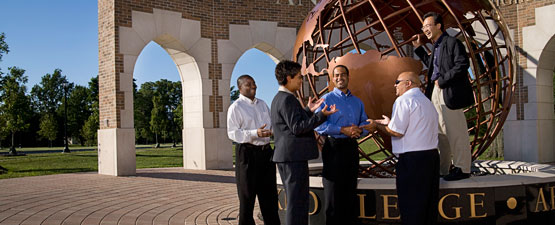Professional Dissertations DMin
Date of Award
1977
Document Type
Project Report
Degree Name
Doctor of Ministry
College
Seventh-day Adventist Theological Seminary
Program
Doctor of Ministry DMin
First Advisor
Steven Vitrano
Second Advisor
William Johnsson
Third Advisor
Lyndon Furst
Abstract
Problem
The increasing usage of audio-visuals in modern communication has brought about an increase in communication efficiency, an efficiency that is sometimes lacking in sermons. Audio-visuals can be viewed by the Christian church as either legitimate or illegitimate means of communication in preaching. If the church accepts these media as genuine and valid vehicles of communication of its message, it must then discover ways of employing audio-visuals effectively and responsibly in preaching.
Methods
For the development of guidelines for the utilization of audio-visuals in preaching, data and information from the following areas have been studied and surveyed: (1) Scriptural data on communication and revelation; (2) the theology of preaching; (3) the literature of communication, education, and audio-visuals; and (A) a survey conducted among the members of one congregation to discover their response to audio-visual sermons.
Results
A study of the Scriptures reveals that God has employed a variety of multi-sensory methods in seeking to communicate with men. While both Old and New Testaments strongly support the idea of the prominence of the word, yet the oral-auditory channel is by no means exclusive to other forms of communication. The literature of the audio-visual field and audio-visual education is rich in sound theoretical principles that can readily be adapted to preaching to insure efficiency of communication. The model of "instructional development" is here of particular benefit in that it seeks to consider the totality of the communication situation. This model also suggests that audio-visuals are not necessarily suited for all kinds of sermons and audiences, but that each particular communication situation must be viewed individually. While the employment of audio-visuals may improve information transmission efficiency in preaching, yet the use of such media is not totally without danger to preaching. To insure that the preacher is aware of such dangers, this project report examines in particular the role of the interpersonal relationship in communication as well as the ethics of human persuasion and suggests responsible ways in which audio—visuals may be used in preaching. A survey conducted among the members of one congregation generally showed favorable responses to audio-visual sermons as well as to various issues arising in such preaching.
Conclusions
The impact of modern media on man makes it necessary for preaching to respond somehow to the contemporary situation. Audiovisuals in preaching is one way through which greater information transmission efficiency may be achieved, for they are media with which modern man is thoroughly familiar. The employment of audiovisuals in preaching, however, needs the guidance of both theoretical principles from the field of communication and also biblically informed theological principles. From a study of Scriptural evidences, communication literature, and a personal survey it is suggested that the use of audio-visuals in preaching may be one viable means of increasing the church's effectiveness in the communication of the gospel.
Subject Area
Preaching; Audio-visual education
Recommended Citation
Thomsen, Ervin K., "Preaching With Audio-Visuals" (1977). Professional Dissertations DMin. 349.
https://dx.doi.org/10.32597/dmin/349/
https://digitalcommons.andrews.edu/dmin/349
Creative Commons License

This work is licensed under a Creative Commons Attribution-No Derivative Works 4.0 International License.
DOI
https://dx.doi.org/10.32597/dmin/349/
Files over 3MB may be slow to open. For best results, right-click and select "save as..."



